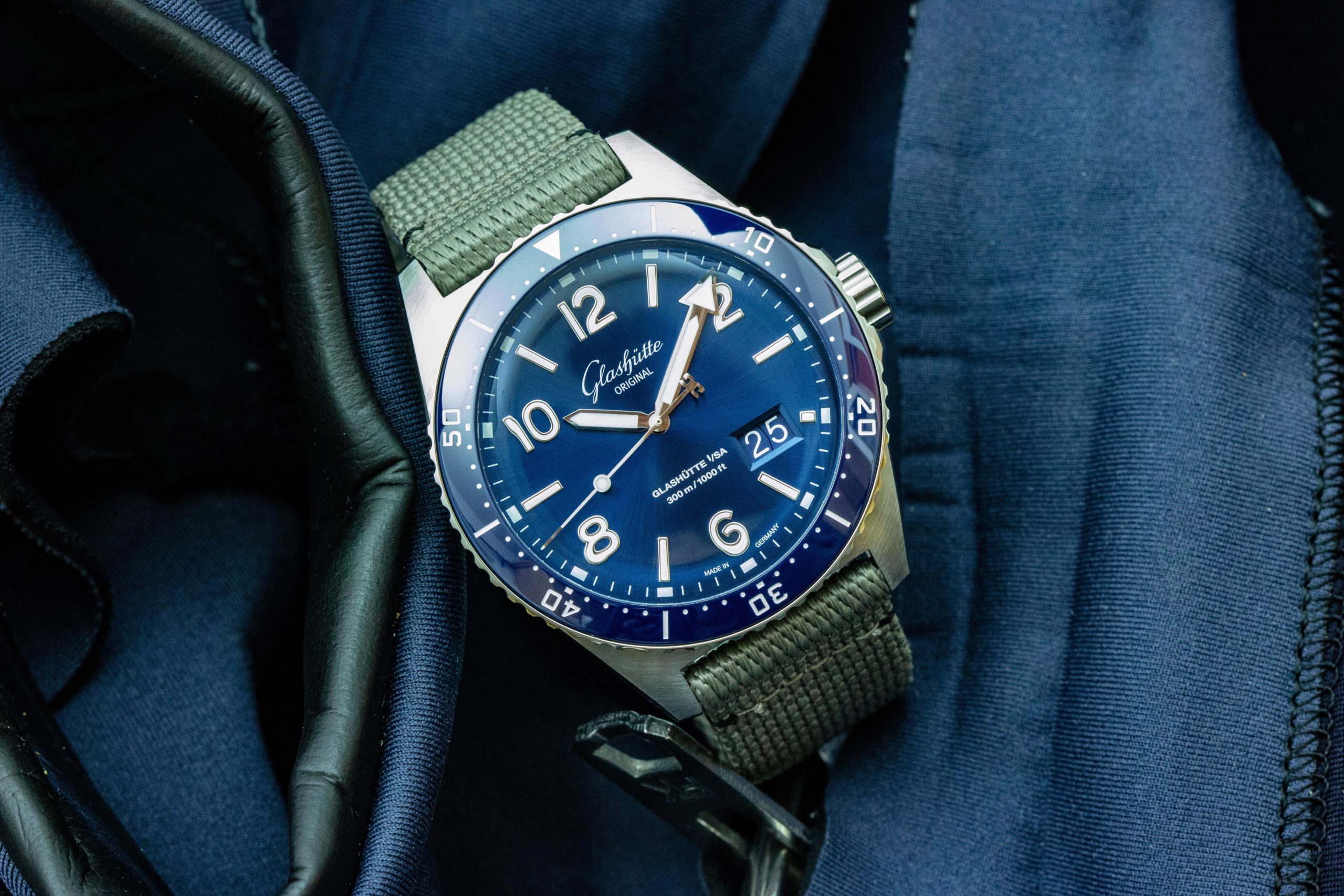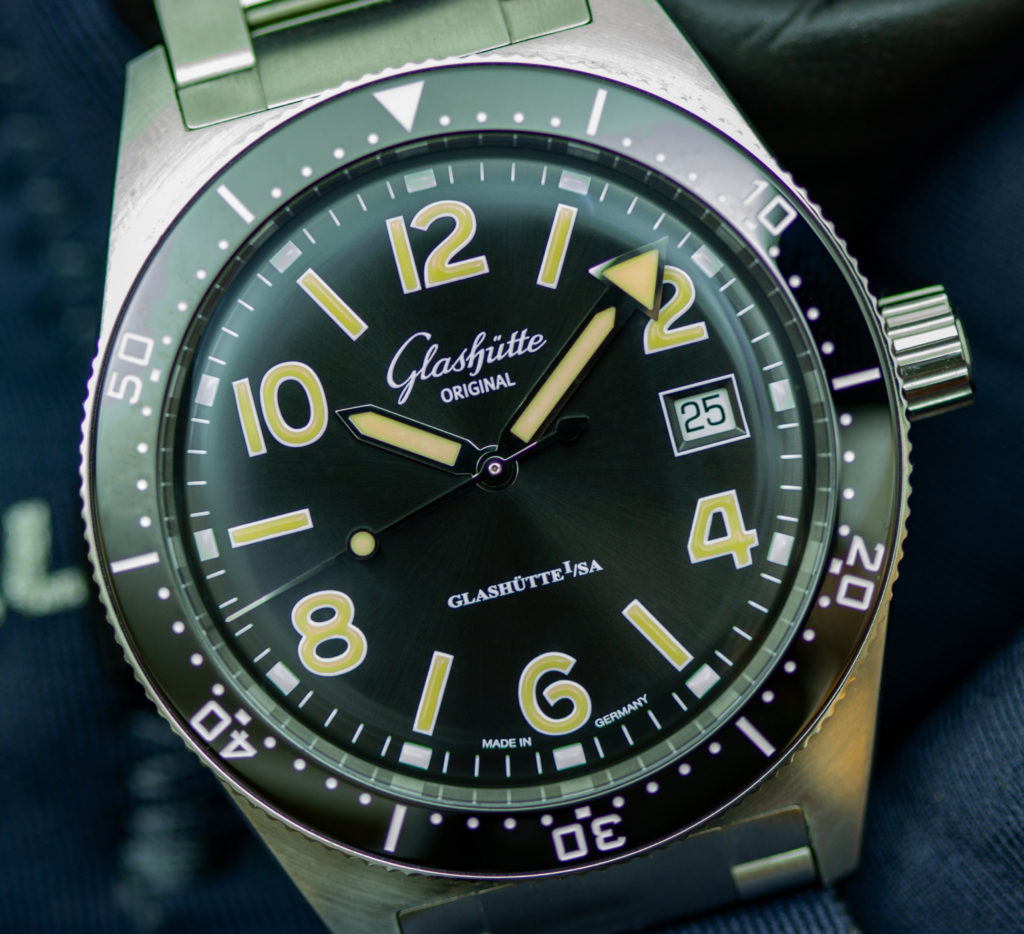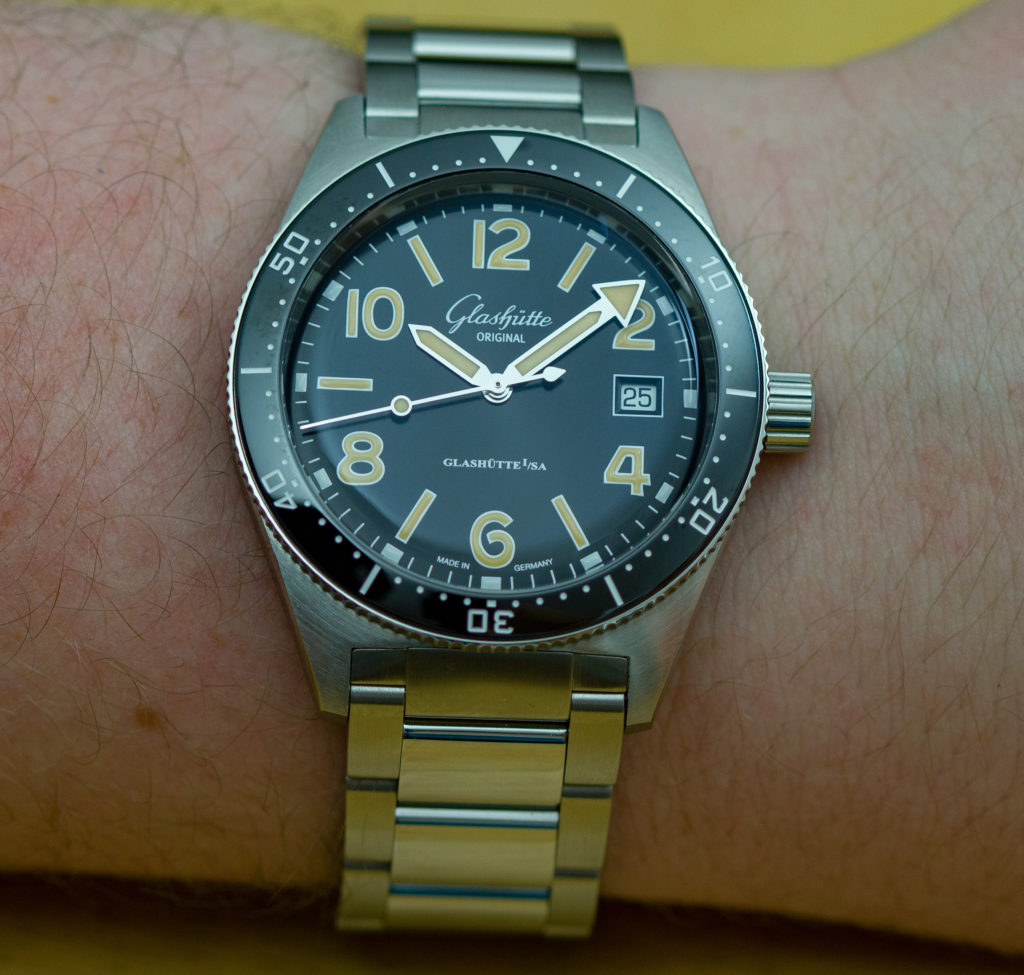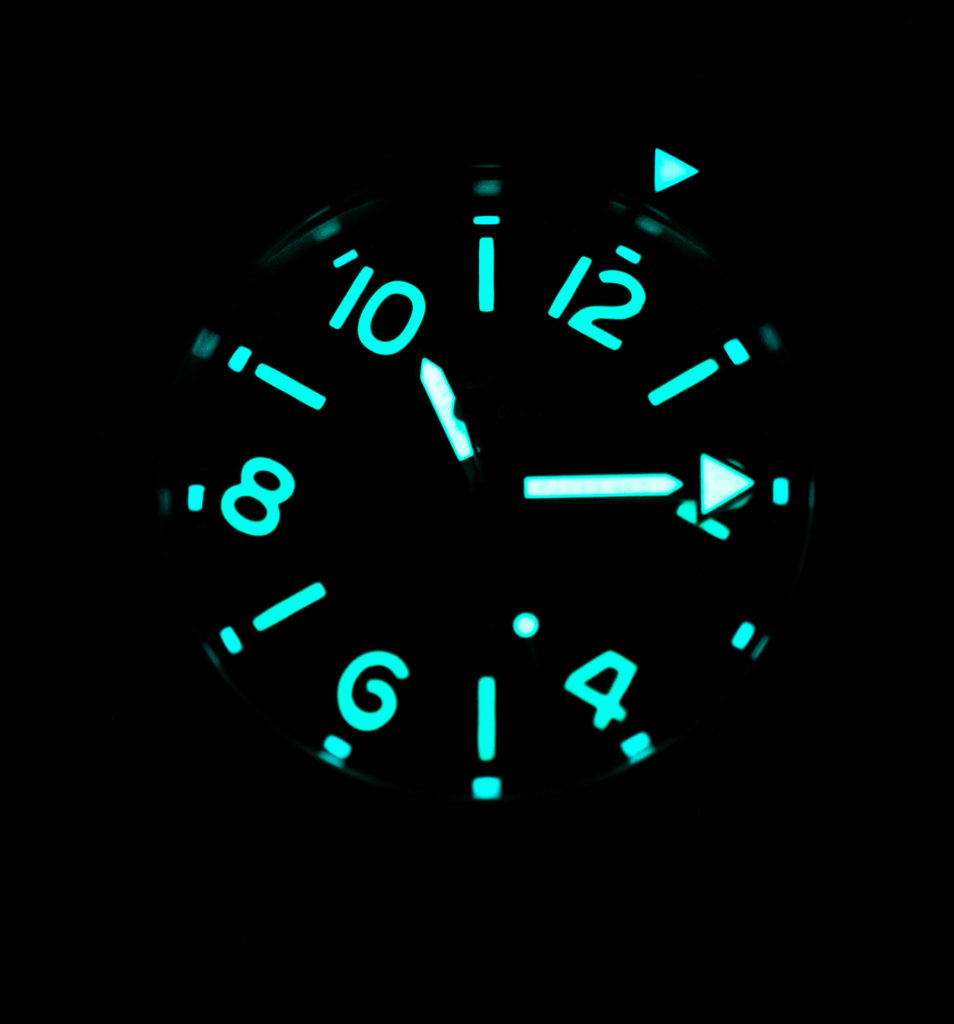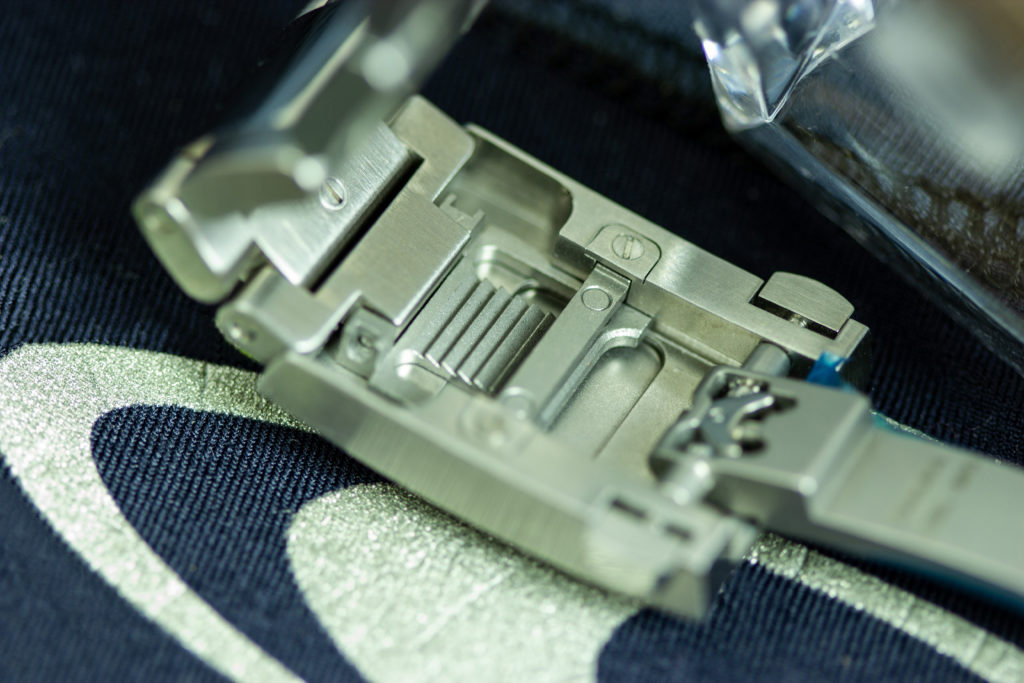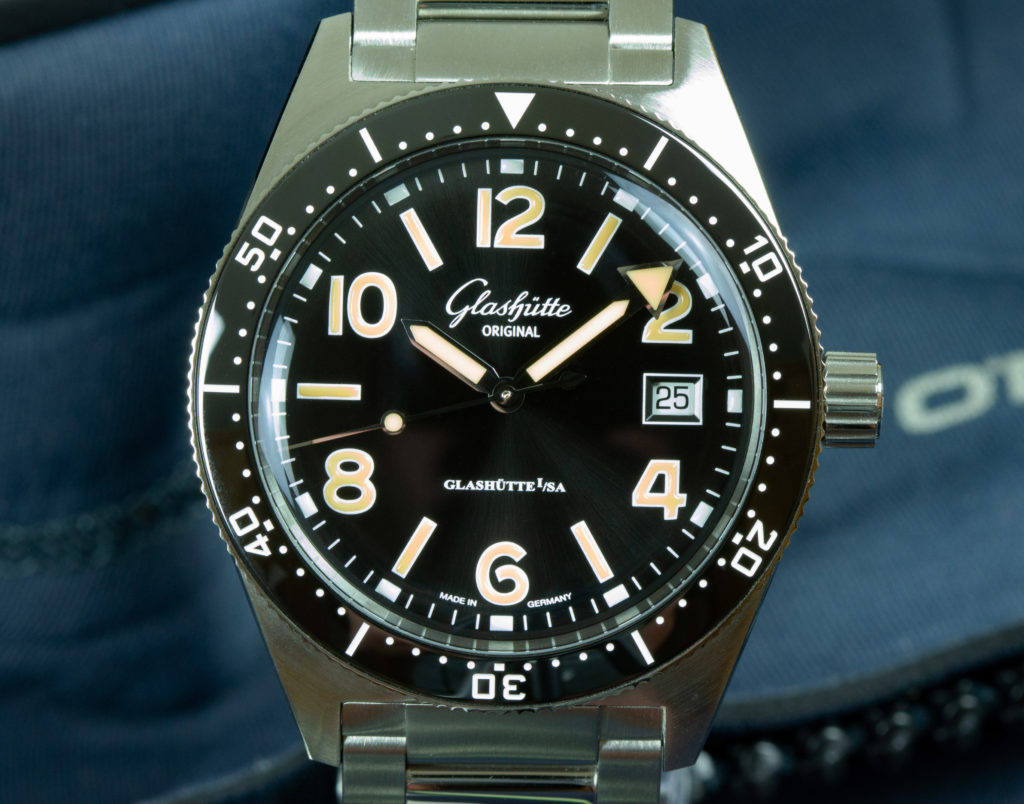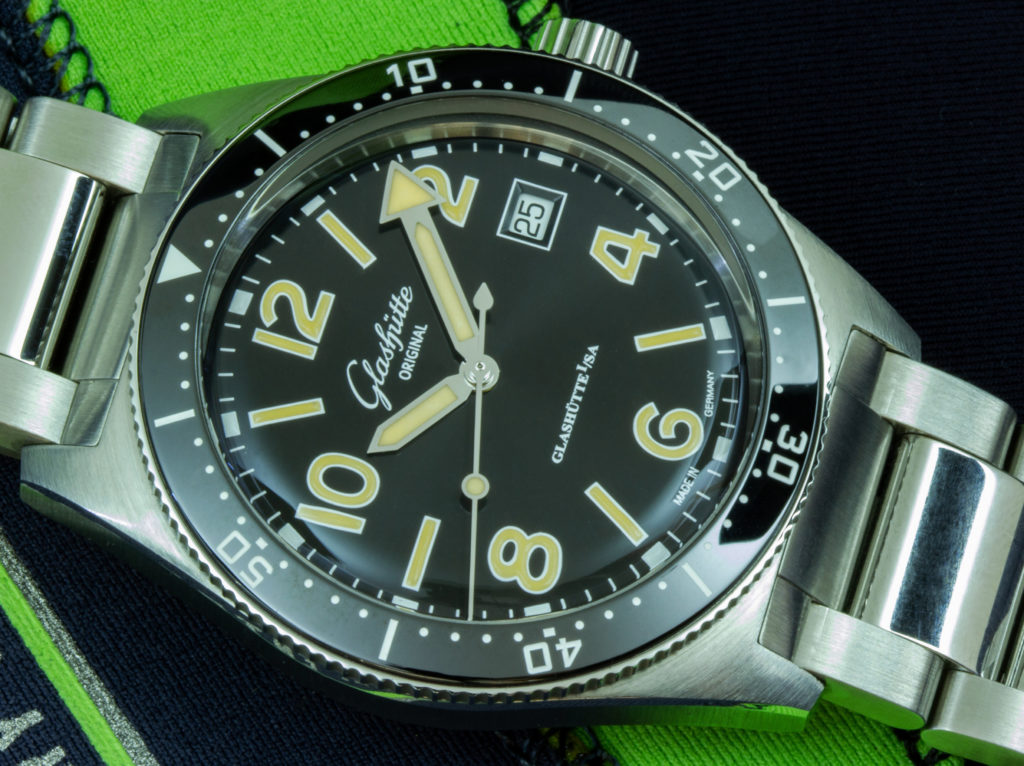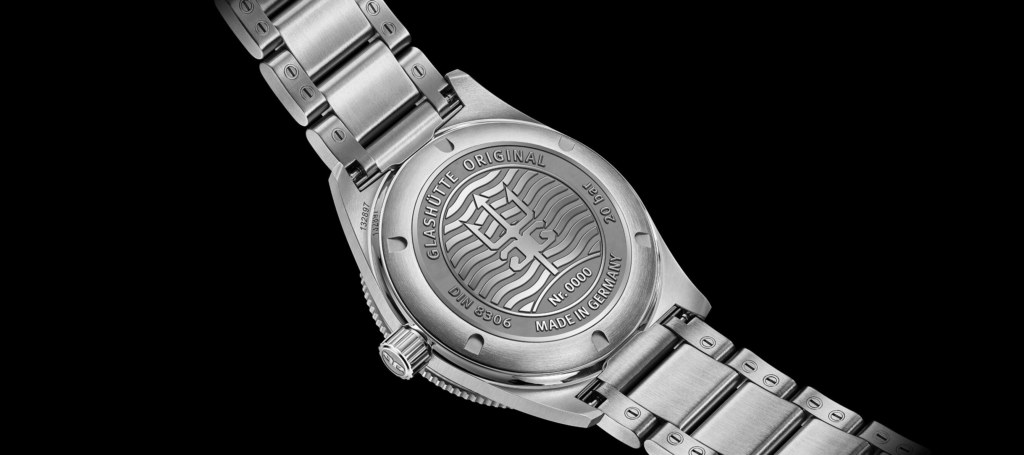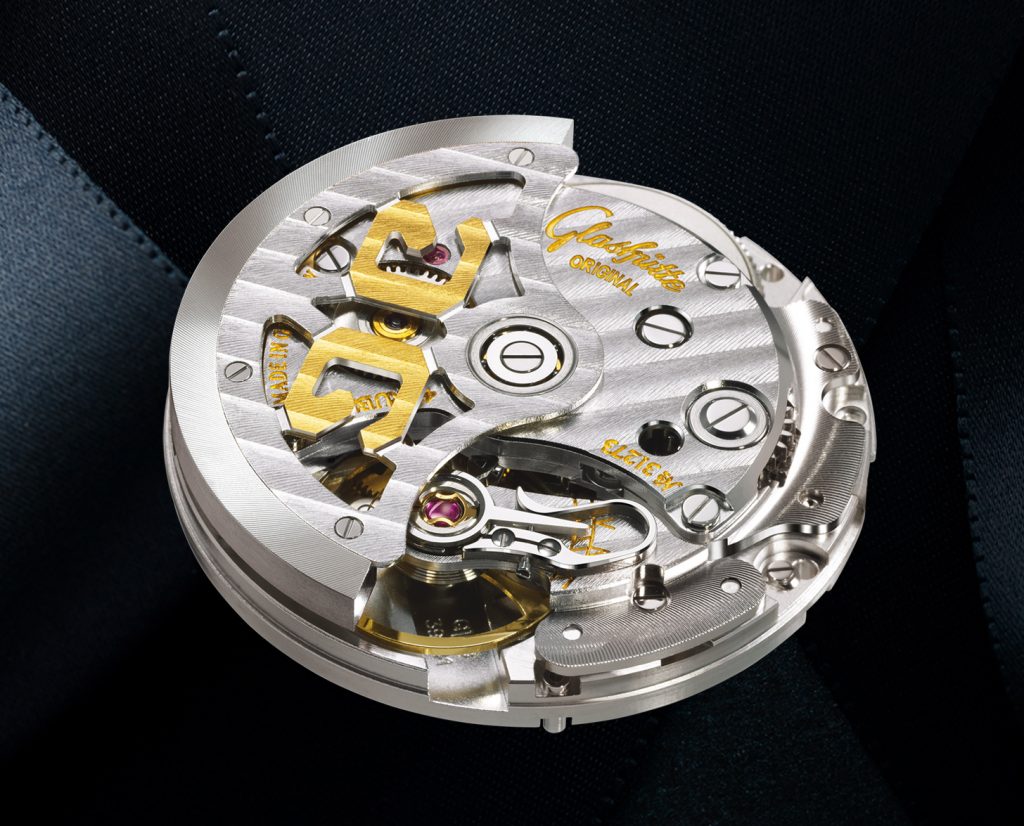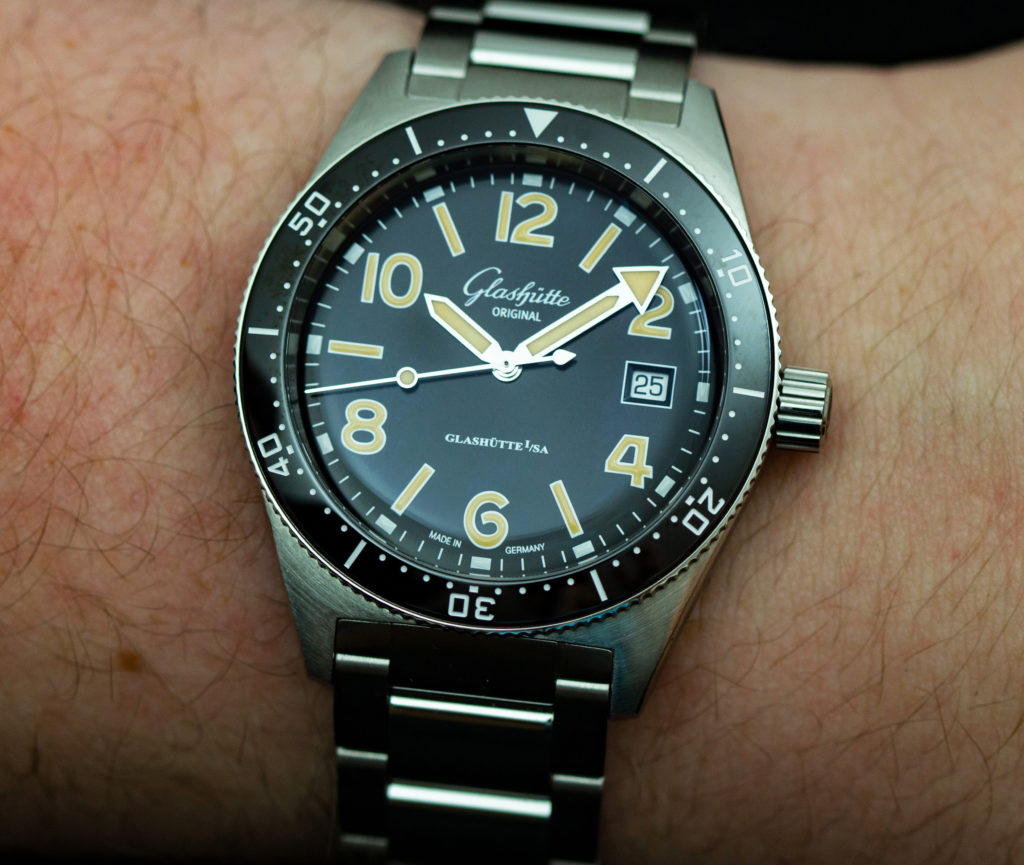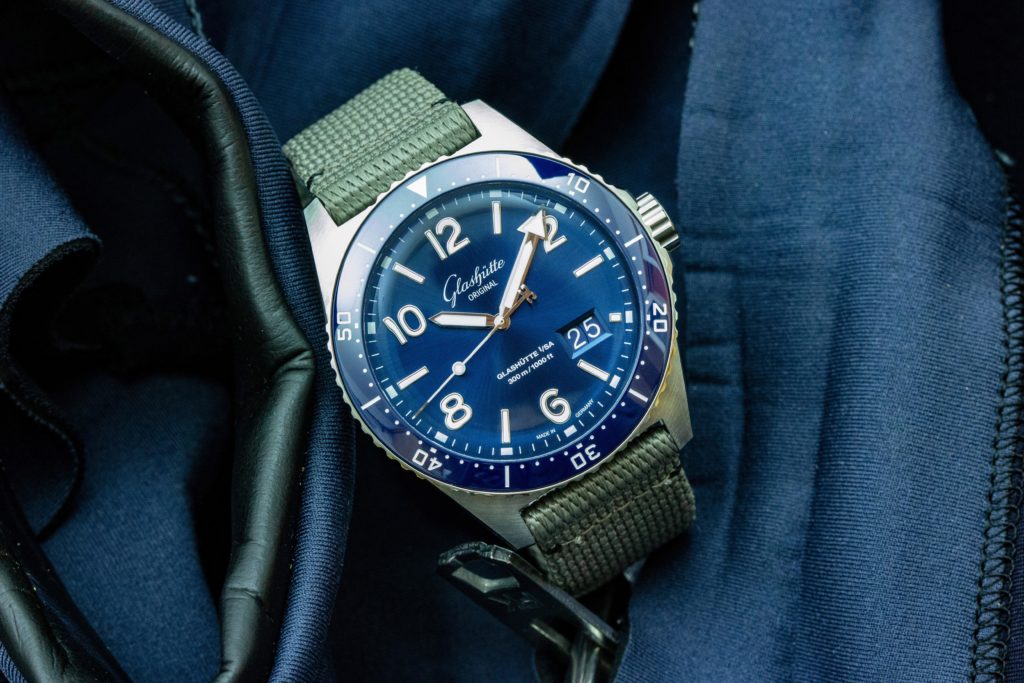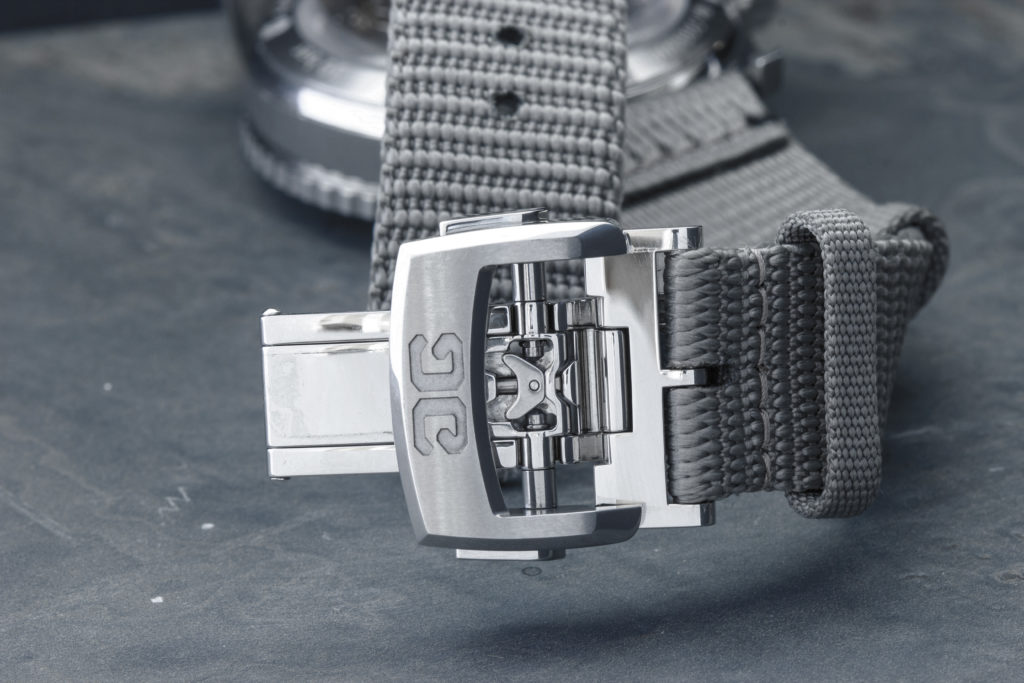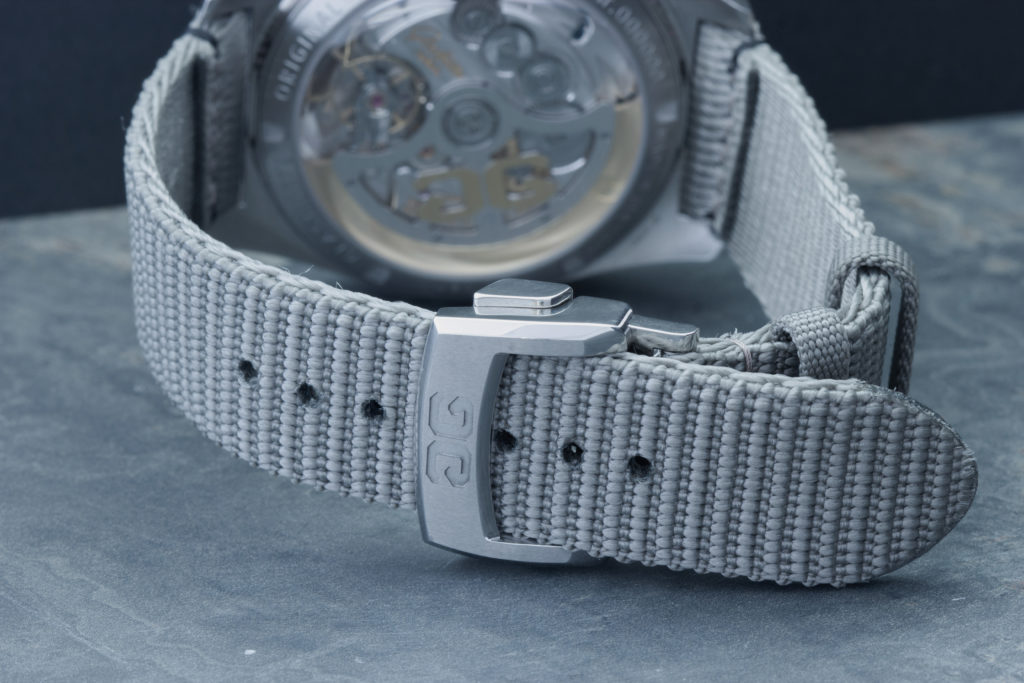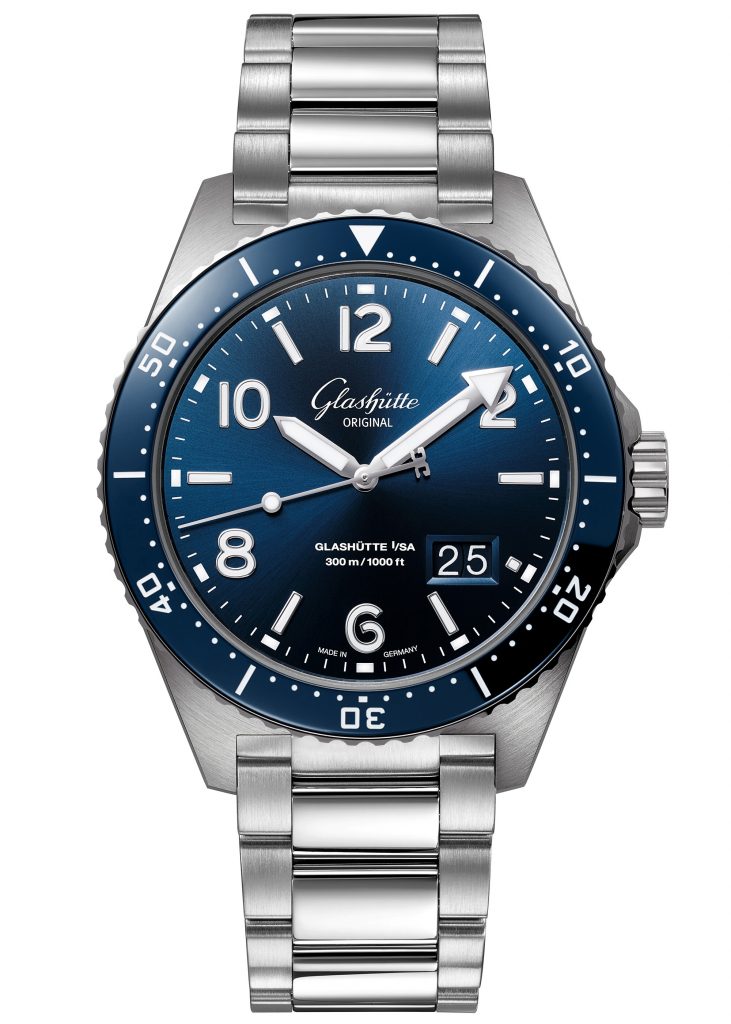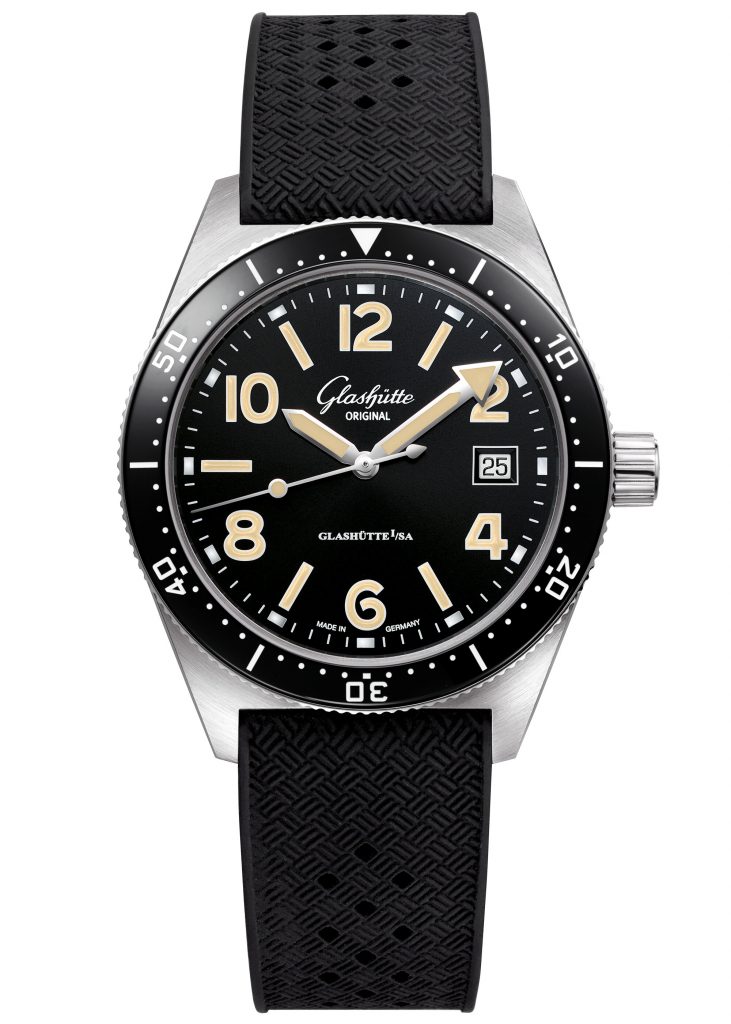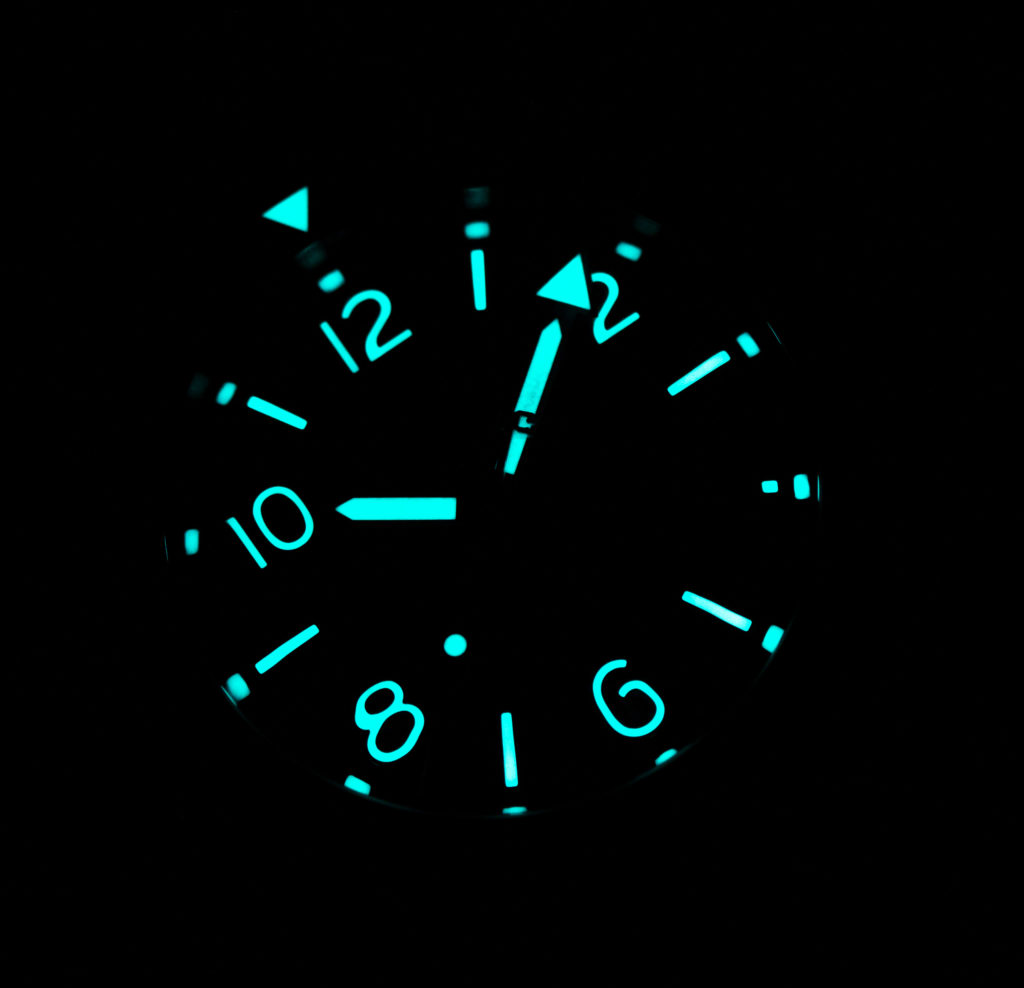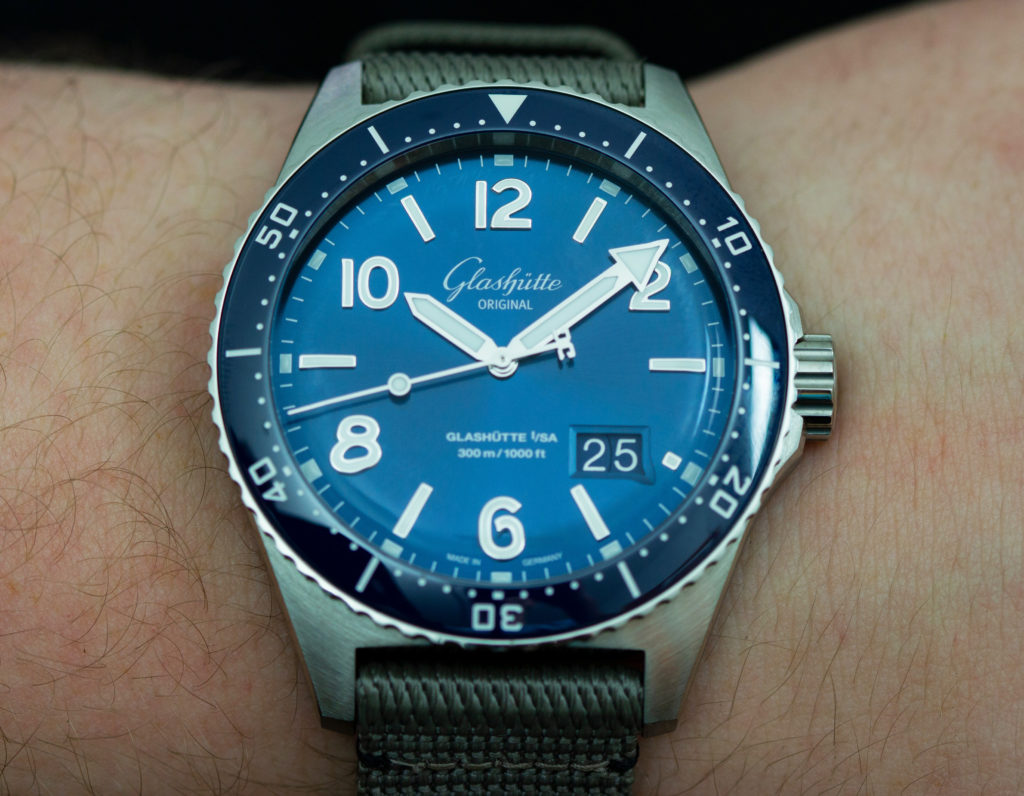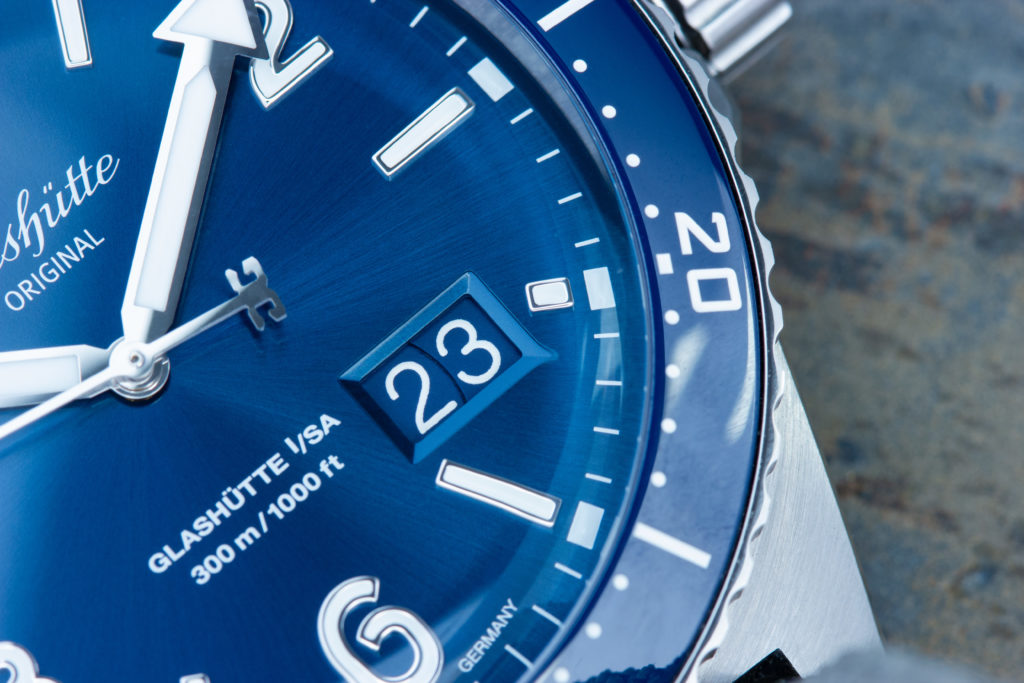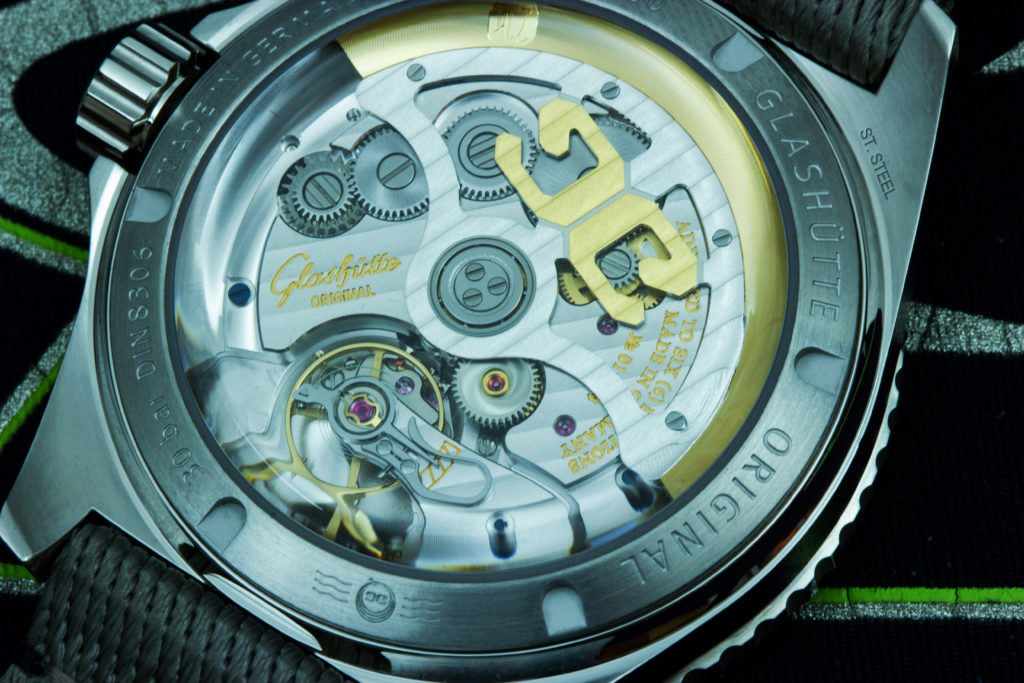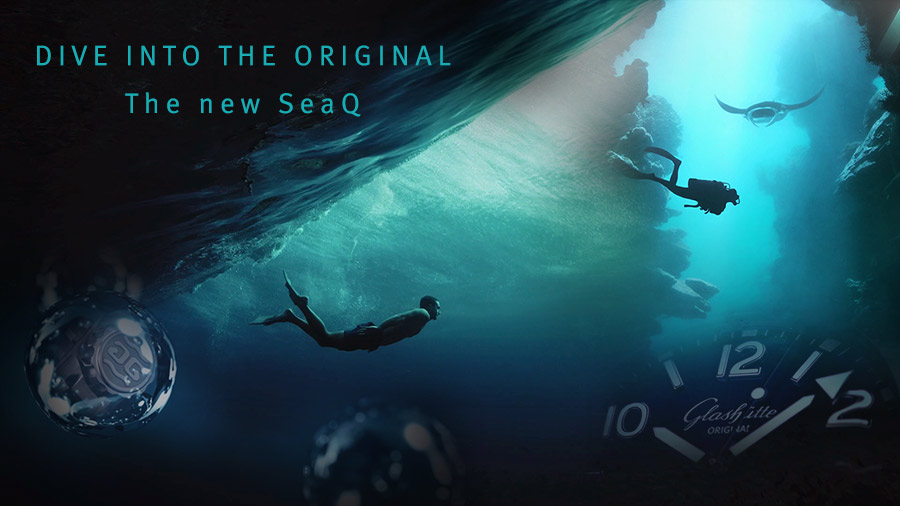In 2019, Glashütte Original unveiled a new addition to their collection of watches. Joining the Senator, Pano, Vintage and Ladies collections was a collection entitled ‘Spezialist’, which of course translates to ‘Specialist’ in English. The Spezialist collection debuted with the SeaQ line, which will hopefully be the first of many for the range.
The new watches are designed to be sporty and sophisticated at the same time, offering very high levels of build quality that reflect Glashütte Original’s position in the Swatch Group as an attractive alternative to Swiss brands. The Spezialist watches also offer a unique proposition to potential buyers who want something higher-end than a Seamaster or Submariner as the diver’s segment becomes a little less populated at the sort of prices these watches are set at. In fact, only the Fifty Fathoms and Fifty Fathoms Bathyscaphe offer competition to the SeaQ models in this price point.
SeaQ
The SeaQ watch provides excellent comfort and class-leading build quality. I’ve heard of people comparing the new SeaQ to Glashütte Original’s previous sports collection, the Sport Evolution, and how the looks don’t seem as ‘unique’ as the Sport Evolution had. Let’s get one thing clear right off the bat: this line is grounded in Glashütte Original history.
The Inspiration for the SeaQ watches can be traced back to the Spezimatic Type RP TS 200 watch. Built for sports divers in the late ’60s, the Type RP TS 200 watch featured a shock-proof case connected to a comfortable rubber strap, and provided all the features one could need from a sports diving watch.
The SeaQ 1969 is the most faithful reinterpretation of the Spezimatic Type RP TS 200. Just like the original, the SeaQ 1969 indicates its quality on the dial. The Type RP TS 200 watch had the number of jewels printed on the dial as well as the word “Shockproof” which showed that Glashütte Original was as serious about quality as it is now.
The Glashütte Original manufactory calibre 39-11 inside the watch has 25 jewels, marked as “25 Rubis” in a nod to the Spezimatic, along with “Shockproof” which continues to denote the quality of the case’s construction. Only the limited-production SeaQ 1969 has this printed on the dial, and all 69 examples of it sold in a short period. The markers and Arabic numerals are painted in “Old Radium” coloured lume to evoke the past. Those who missed out on the SeaQ 1969 will be pleased to know that they can get the same striking embossed rubber strap for the non-limited SeaQ that I got to review as well.
I had a chance to try out the SeaQ reference 1-39-11-06-80-70 which came in a 39.5mm x 12.15mm case with a stainless steel bracelet. The quality of the watch is faultless; seriously, the bracelet feels solid and well-built. I tend to judge bracelets by their mass and their finishing of edges, and I believe that you should be able to feel where your money is going with a high-end wristwatch. The bracelet and security clasp feel luxurious indeed. I like the simple and classic style of the bracelet with polished centre links. Of course, Glashütte Original will be able to polish any scratches out, having owned polished watches myself, I know what it feels like to see a scratch on your precious piece. There aren’t any sharp lugs or edges to dig into your wrist, making it a very comfortable wearing experience.
The twin-pusher folding clasp also has a unique trick up its sleeve: pushing the double ‘G’ logo in the centre of the clasp unlocks the diving extension and allows for more breathing room on the fly. Not many brands have a system like this, but Glashütte Original has been doing it since 2005. Usually, you have to take the watch off and fiddle about with unfolding or re-folding a little extension piece, or you have to try and dig your fingers into the clasp to push a little piece down. This way, you just push on the top and let it slide.
The dial of the SeaQ follows on from the original Spezimatic with numerals representing even numbers and baton markers in place of odd numbers, making a balanced dial that isn’t cluttered despite the size of the markers and hands. These are covered in SuperLumiNova which, to my surprise, glowed blue despite having a vintage-style orange hue in daylight. Reading the dial was a breeze, and I like the domed sapphire crystal which evokes the old watches by distorting the dial when you view it from an angle. There’s also a distinct sunray finish to the dial, despite being black it reflects light beautifully and is pleasing to the eye.
On the caseback, the engraved base plate is horizontally aligned and then fixed in this position by means of a threaded base ring. The engravings on the base plate offer decorative enhancement in the form of the trident, a distinctly maritime symbol, the Glashütte Original Double-G and 20 waves, which symbolise the 20 bar water resistance.
Inside the watch is the calibre 39-11, an in-house made movement developed by Glashütte Original. It features a 4Hz beat rate and a power reserve of 40 hours You can’t see it because the elegantly engraved steel caseback hides it. Still, the movement features the high-end finishing you’d expect from any Glashütte Original watch with polished screws, bevelled edges and Glashütte stripes covering the movement. There’s even a gleaming swan’s neck regulator to allow a watchmaker to make fine adjustments to the balance.
Being on their excellent bracelet, a bracelet that is held together by screws rather than pins, this model is the most expensive of the options. Including VAT, it costs €9700.
SeaQ Panorama Date
Now for the more contemporary model, the SeaQ Panorama Date. The reference for this watch is 1-36-13-02-81-34 and it comes in at 43.2mm in diameter by 15.65mm in height. For me, this model fitted my wrist better than the SeaQ above. I have quite large wrists which can sometimes make smaller watches seem very small. That’s not necessarily a complaint, most people prefer watches to be around 40mm in diameter. For me, the SeaQ Panorama Date appears to be the Goldilocks of the models. It also came on a nylon mesh strap developed specifically for this watch which was grey and contrasted the blue of the watch excellently.
The polished clasp assembly reveals internal workings connected to the pushers which secure the clasp in place.
Like the SeaQ, there are different options available for the SeaQ Panorama Date. You have a choice of black or blue, I had the blue, with either a steel bracelet, rubber strap or a fabric strap. Both straps come with a choice of a pin buckle or a folding clasp. I wholly recommend the folding clasp, if only for the exposed mechanism which you can see clearly. I found the strap to be very comfortable, though we aren’t exactly having tropical weather here in the UK at the moment, I imagine that those of us blessed enough to live in warm climates might prefer this strap or the bracelet, it was breathable and light though the heavy steel clasp meant it wasn’t unbalanced the way it might be with a pin-buckle, though I’d need to get another hands on to find that out.
Glashütte Original produces the SeaQ Panorama Date in two different colours and with a multitude of strap options. Shown here are the alternative metal bracelet and rubber strap.
The SeaQ Panorama Date and the SeaQ share the same design of markers and hands, with alternating numerals and batons making up the markers and the distinctive hands both receiving SuperLumiNova coatings as well. There’s also a triangle of lime on the bezel of both watches rather than a small pip which makes for increased legibility. These things glow bright blue and will continue to do so for hours, as is required of them as diving watches.
Speaking of dive watch requirements, the SeaQ Panorama Date meets the ISO 6425 standard for diving watches and also DIN 8306, which is Germany’s version of the ISO standard that is reportedly harder to achieve. Each watch undergoes intensive in-house testing to ascertain its water resistance and airtightness in overpressure and underpressure conditions. During a prior homologation procedure, test watches were examined for shock resistance, resistance to salt-water corrosion and the resilience of individual functional elements. In my photo of the casebook below, the engraving with the double G logo surrounded by wavy lines denotes that the watch has passed this test, which is more demanding than the standard German chronometer test. Before being delivered to the customer, the Calibre 36 will also undergo Glashütte Original’s 24-day test that it performs in house to ensure that the movement meets the highest standards of precision, stability, running time and aesthetics, making it a truly modern calibre and cementing Glashütte Original’s reputation as a maker of modern-day sports watches.
The movements that undergo the 24-day checks are tested in different positions over 24 hours, and the deviation must not exceed -4/+6 seconds as required from the German Calibration Service’s (DKD Deutsche Kalibrierdienst) chronometer standard. The watches will then spend twelve days being tested in six different positions to ensure accuracy; most manufacturers test in five positions only. As if this wasn’t enough, the watches will then be tested at three different temperatures (8 degrees C, 23 degrees C and 38 degrees C) over 72 hours. During all of this testing, the watches must be able to deliver at least a 100-hour power reserve. Lastly, the watches are pressure tested at 30 bar and then visually inspected. This isn’t even the end of testing, as the watches will also receive condensation testing, seal testing, a full water-based pressure test and yet another condensation test as a part of the new in-house standard. Only then can a SeaQ Panorama Date be delivered.
The movement has visual appeal, it’s not often we see something as neatly decorated like this in the back of a diving watch, so it should be appreciated. The 21k gold skeletonised automatic rotor takes up most of the view, though you can capture a glimpse of the three-quarter plate underneath.
it which has Glashütte striping applied to it. The combination of striping, polishing and bevelling makes this an attractive watch to look at on the front and the back, and it follows the same high-end level of finishing I’ve seen from other Glashütte Original watches I’ve reviewed in the past. It’s also appealing to those who love mechanics as well, as there are highly decorated gears on display on the traditional three-quarter plate movement.
For those wishing to know the specifications, it has a 100-hour power reserve, a 4Hz beat rate, a silicone hairspring and a polished swan’s neck fine regulation too, as is the tradition with Glashütte Original. This is a step up above the competition, and thanks to that 24-day test which sounds -quite frankly- evil, you get the build quality to go with the frills. To see it on a professional diving watch is a pleasure as well, usually movements get hidden away, but the SeaQ Panorama Date lets you Sea(Q) it all… That was a terrible pun, I apologise.
I loved the way this watch felt on the wrist, the Panorama Date window on the dial was straightforward to read, all the surfaces of the watch had a very high quality feel to them, and the watch felt sturdy overall. Those opting for the bracelet will find the watch to be on the heavier side, but, don’t forget that the SeaQ Panorama Date is a larger watch (43.2mm compared to the 40mm of the SeaQ). I think the fabric strap with the twin-trigger clasp gives you the best of both worlds when it comes to mass and that luxury feeling. This would be a great summertime watch and I can envision it being a great beachside barbecue companion.
At this price, which is €11,000 plus VAT, I can’t find fault with it. It’s well worth shortlisting for your next watch.
Conclusion
Which one of these you go for depends on you personally. I found the larger SeaQ Panorama Date model fitted my wrist better, though the SeaQ is the more vintage-styled variant, with a standard date as opposed to the Panorama Date. Either model is more than capable of being your life-partner out among the waves, whether you are gently bobbing on top of them or observing the explosion of colour that lives below. Glashütte Original has already earned itself a strong pedigree in creating tools for professional divers, but they’re perfectly at home on anyone’s wrist, no matter the level of experience. If you haven’t thought about scuba diving then I can personally say it’s well worth a go, seventy percent of our planet is covered in water, why limit yourself to just thirty percent? We hope to see you out there someday.
As an extra bonus to this conclusion, you’ll be pleased to know that Glashütte Original has since expanded the Spezialist collection, check out our thoughts on the new watches by clicking here.
Experience more about these rare pieces and Glashütte Original’s Watchmaking Ar

